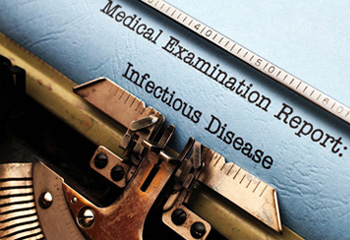 Infectious disease is a major public health concern in the United States and across the globe. Coordinated and accessible data is imperative for understanding the patterns of these diseases, and this underlines the importance of error-free documentation with infectious disease medical transcription services. Forecasting the spread of infectious diseases is crucial to preventing occurrence.
Infectious disease is a major public health concern in the United States and across the globe. Coordinated and accessible data is imperative for understanding the patterns of these diseases, and this underlines the importance of error-free documentation with infectious disease medical transcription services. Forecasting the spread of infectious diseases is crucial to preventing occurrence.
The preparedness of public health systems was tested by 2014 Ebola outbreak in West Africa. Emerging diseases such as Zika and re-emerging ones such as measles also raises questions on how well prepared public authorities are to deal with infectious diseases.
A new study from the University of Georgia published in the Royal Society journal Interface provides the theoretical base for a disease forecasting system that would give public health officials time to be ready for outbreaks of certain infectious diseases in the future and even prevent them.
According to this study which is part of an initiative named Project Aero, the population is at risk of an outbreak when infectious diseases reach a critical tipping point at which each infected individual tends to pass the infection on to more than one other person.
The researchers suggest that the delay between the time when a disease outbreak becomes possible and when it actually happens depends chiefly on two factors:
- how frequently infection is introduced to the population, and
- how soon the number of cases caused by a single individual increases
“Depending on the disease, officials might use the time to try to increase resources for treatment, initiate a pulse vaccination campaign, or do whatever they think will most reduce the risk,” says one of the lead researchers.
It is well known that data from electronic health records (EHRs) is a valuable tool for medical and population health research, including infectious disease study. Today, medical transcription companies play a crucial role in ensuring the integrity of EHR data. Physician dictation is faithfully transcribed, thereby ensuring a rich database for researchers.
A 2014 report from Athena Health highlights the significance of real-time data from EHRs in helping local public health authorities monitor and provide guidance for influenza and other outbreaks. Accurate and timely infectious disease medical transcription is crucial for ensuring coordinated and accessible EHR data to help public authorities gain quick, actionable insights into the patterns of these diseases, where they are rising, and the ages that are most at risk. The key to effective disease monitoring is the connected, free flow of data between healthcare facilities and public health authorities. Expert EHR data entry by experienced medical transcriptionists goes a long way in achieving these goals.
